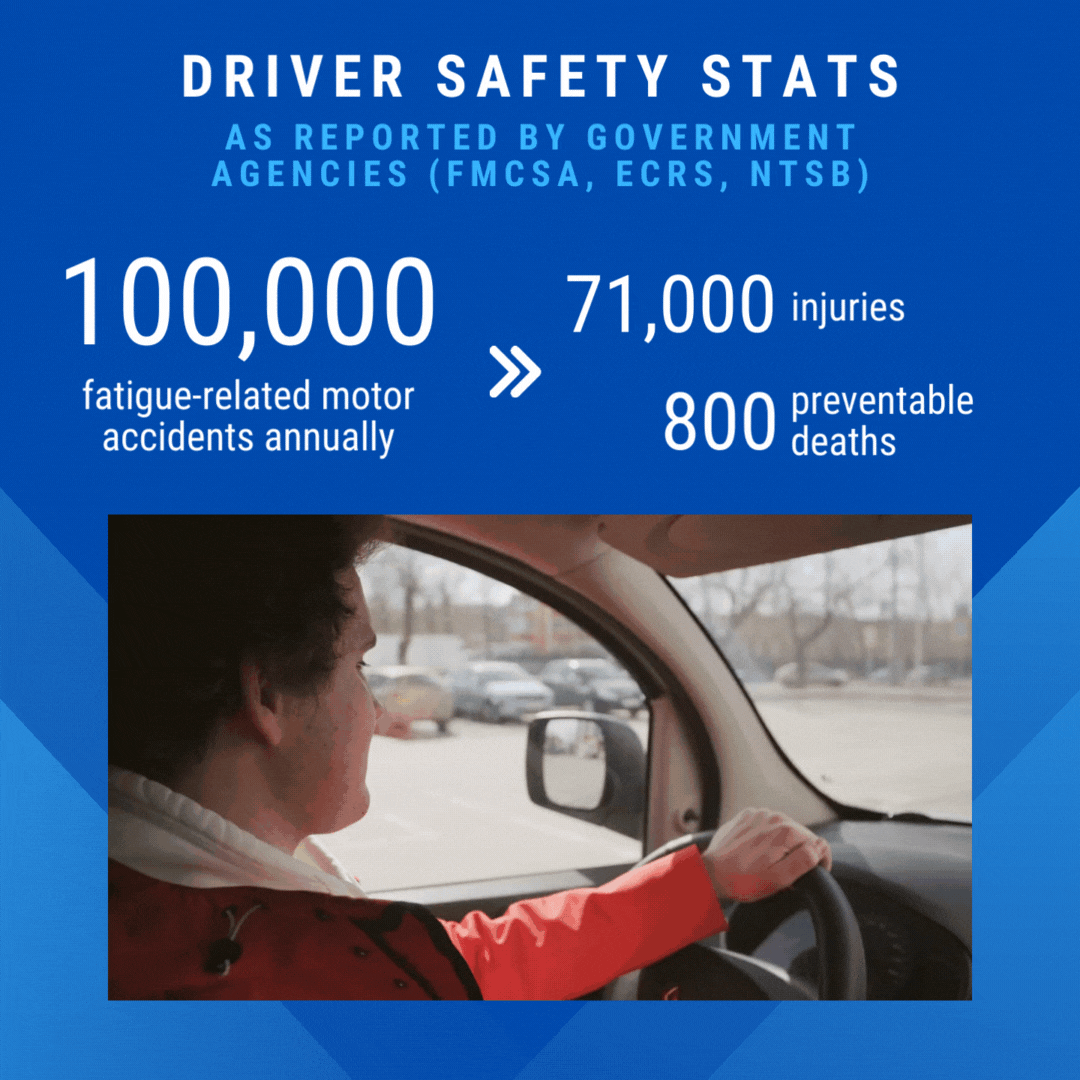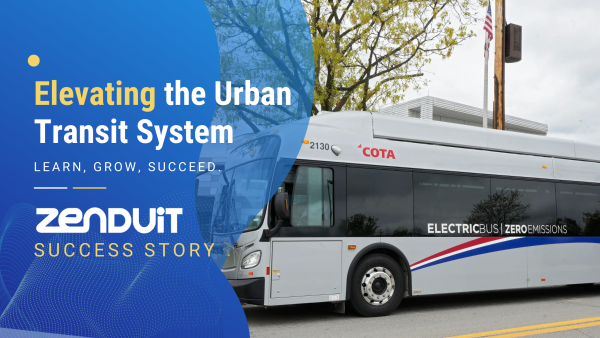Mastering Driver Safety: Your Guide to ELDs and Fleet Management
April 17, 2024
Are you grappling with the daunting task of fleet safety? Does it ever feel like navigating accidents – preventable especially – are more difficult than you could have imagined?
As the toll of preventable accidents continues to mount, it’s imperative for fleet managers to adopt a proactive approach to driver safety. In this comprehensive guide, we’re diving deep into the strategies and technologies that can transform your fleet operations and pave the way for safer journeys.
The Alarming Impact of Driver Fatigue
Behind every statistic lies a sobering reality: over 100,000 fatigue-related motor accidents occur annually, resulting in 71,000 injuries and 800 preventable deaths.

These numbers paint a grim picture of the dangers posed by driver fatigue on our roads. But fear not, because with the right technology and strategies in place, fleet managers can avoid becoming mere statistics. From advanced AI solutions to comprehensive coaching programs, we’re empowering fleet managers to take proactive steps to mitigate the risks of distracted driving and fatigue-related incidents.
Navigating Regulatory Waters with ELDs
In the dynamic landscape of regulatory compliance, Electronic Logging Devices (ELDs) serve as beacons of clarity and accountability. From the U.S. Federal Motor Carrier Safety Administration’s mandate on ELDs to upcoming regulations in Canada, staying abreast of developments is crucial for ensuring compliance and safety on the road. The history and timeline of ELDs provide insights into the evolution of regulatory requirements, offering fleet managers a roadmap to navigate the complex regulatory landscape.
-
March 2014 — FMCSA released a notice of proposed rulemaking outlining amendments to safety regulations.
-
December 10, 2015 — FMCSA published the ELD mandate final ruling.
-
December 18, 2017 — Deadline for drivers using paper logs to switch to ELDs.
-
December 16, 2019 — Deadline for full compliance with ELD regulations.
The Power of Data-Driven Insights in Fleet
In the ever-changing world of fleet management, safety is everything; of your own drivers, of the fleets, of the others around.

But how do fleet managers navigate the complexities of safety in an industry filled with risks? Advanced technologies like Advanced Driver-Assistance Systems (ADAS) and Machine Vision with Artificial Intelligence (MV+AI) offer crucial data-driven insights to revolutionize fleet safety.
Consider this scenario: Your fleet is navigating highways, encountering various risks along the way. How do you ensure your drivers remain focused amidst the distractions of the road?
ADAS technology steps in, providing both passive and active safety measures to keep your drivers on track. Passive ADAS delivers real-time alerts within the cab, reminding drivers to steer clear of risky behaviors like phone use or distractions.
Meanwhile, active ADAS takes proactive steps, intervening autonomously to prevent potential collisions—such as collision avoidance and lane departure warnings, acting as a digital assistant for your drivers.
But there’s more to it. Imagine if your fleet had an additional set of eyes—an AI-driven observer that could analyze driving behaviors accurately. That’s where MV+AI comes into play, ushering in a new era of safety. By integrating machine vision with artificial intelligence, MV+AI systems detect risky actions like phone usage or seat belt neglect and provide real-time alerts to drivers, empowering them to avoid danger.
As a partner in fleet success, ZenduIT understands how just data insights alone aren’t enough to help managers make crucial decisions. We introduced ZenScore – which turns data into actionable insights.
With our support in configurable coaching workflows, tools like ZenScore puts quantifiable assessments to driving behaviour, empowering both drivers and managers to address safety concerns proactively, tailored to their operation’s needs.
In essence, the combination of ADAS, MV+AI, and ZenScore isn’t just about adopting technology—it’s about embracing a safer future for your fleet.
Identifying dangerous habits, and optimizing fleet efficiency can help monitor violations.

Leveraging Telematics & Fleet Support: Your Key to Proactive Safety
Telematics software doesn’t just become another tool then – it’s a gateway to proactive safety.
Moreover, the concept of gamification emerges as a promising strategy to incentivize safe driving behavior. Rewards can encourage drivers to strive for better scores, and with the emergence of mobile apps and gamification strategies, fleet managers have more options than ever to enhance driver safety and foster a culture of safety within the organization.
Furthermore, career growth opportunities for drivers who demonstrate consistent safe driving behavior further reinforce the importance of safety within the company.
|
Gamified Incentive |
Execution |
Expected Impact |
|
Gift cards |
Awarded to drivers with the highest safety score |
Increased motivation and engagement among drivers |
|
Wall of Honor recognition |
Displayed in the office or shared digitally |
Fosters a sense of pride and healthy competition |
|
Career advancement |
Promotions or bonuses for safe driving records |
Encourages long-term commitment to safety and excellence |
FAQs
How can I ensure that my drivers actively participate in gamified safety programs?
Actively involve your drivers in the design process of gamified safety programs to ensure buy-in and engagement. Communicate the benefits clearly, emphasizing how participation contributes to a safer work environment and rewards for safe driving. Incorporate feedback loops and regular updates to maintain interest and motivation.
Are there any legal considerations I need to keep in mind when implementing safety apps and scoring systems?
Yes, it’s essential to ensure compliance with relevant privacy and data protection regulations when implementing safety apps and scoring systems. Be transparent with drivers about the data collected, how it will be used, and their rights regarding their personal information. Additionally, consult legal experts to ensure adherence to local laws and regulations.
How can I measure the effectiveness of gamified incentives in improving driver safety?
To measure the effectiveness of gamified incentives, track key performance indicators (KPIs) such as accident rates, compliance with safety protocols, and driver feedback. Analyze trends over time to assess the impact of gamification on safety outcomes. Conduct regular surveys or focus groups to gather qualitative feedback from drivers on their experiences with the program.
What steps can I take to address resistance or skepticism among drivers towards safety initiatives?
Address resistance or skepticism by fostering open communication channels with drivers. Clearly communicate the rationale behind safety initiatives and the benefits they offer, such as improved job security, reduced risk of accidents, and potential rewards. Provide training and support to help drivers understand the importance of safety and how they can actively contribute to a safer work environment.
Are there any additional resources or support available for fleet managers looking to enhance driver safety through gamification?
Yes, there are various resources and support available for fleet managers interested in enhancing driver safety through gamification. Consider partnering with telematics providers or safety consultants who specialize in implementing gamified safety programs. Additionally, industry conferences, webinars, and online forums can provide valuable insights and networking opportunities for fleet managers seeking to learn from others’ experiences and best practices.


